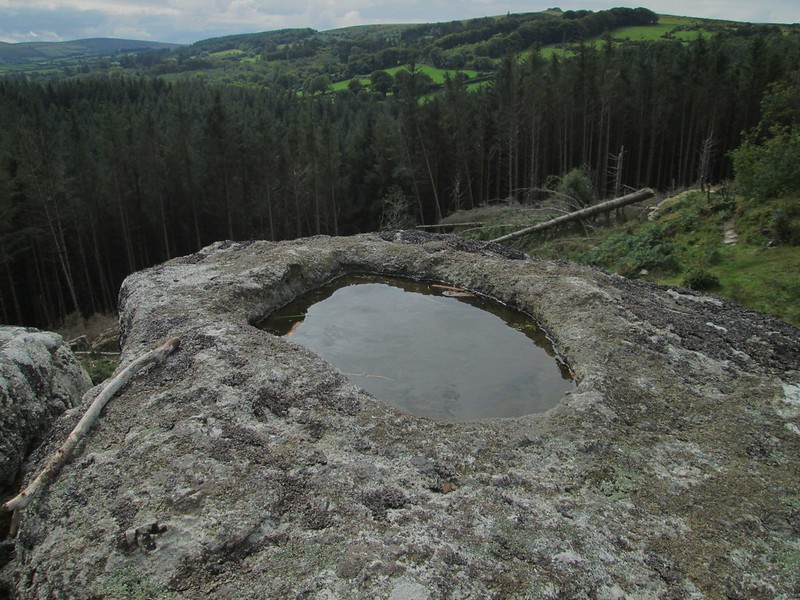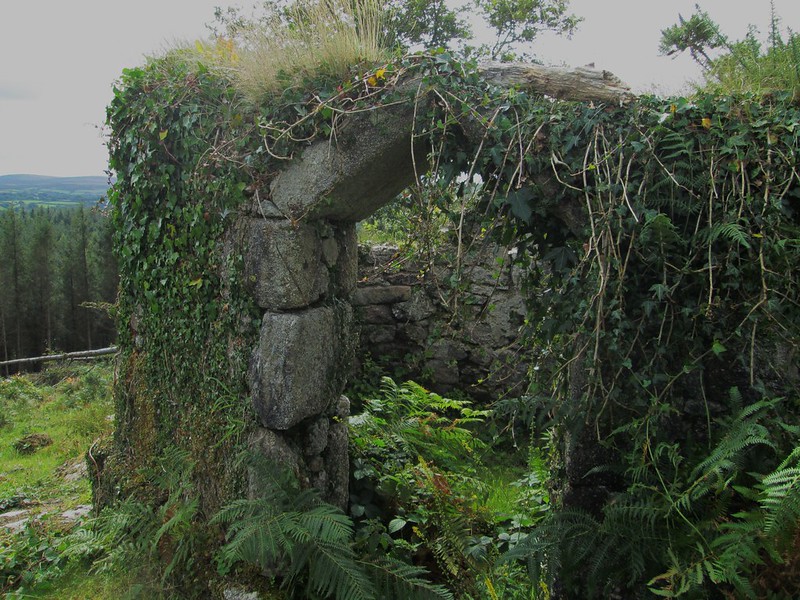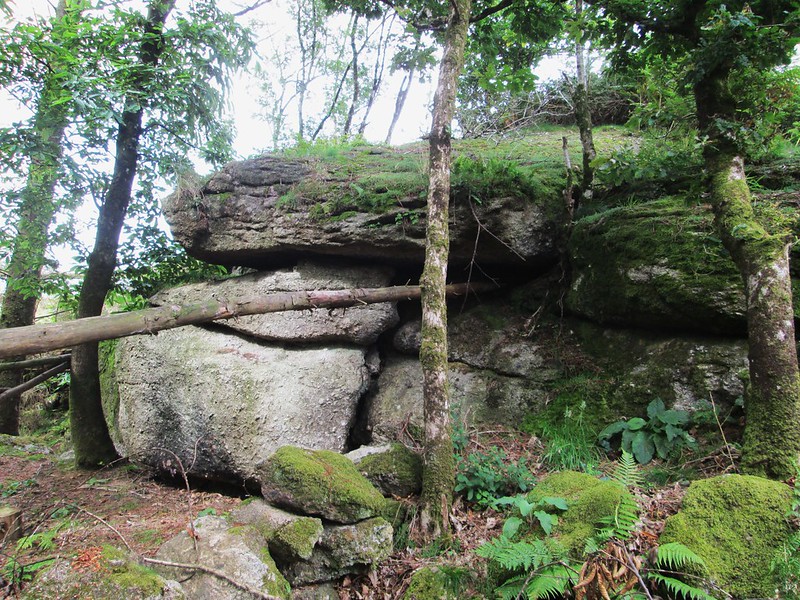TORS OF DARTMOOR EXTRA
a collection of extra material from the tors of dartmoor team
Dartmoor Discovered: Gidleigh TorTim Jenkinson on 28 February 2023 Gidleigh Tor (side view) An edited version of this article appeared in Dartmoor Magazine - Spring 2017 Issue 126.The first mention of Gidleigh Tor by William Crossing comes at the turn of the 20th century in the charming book The Teign: From Moor to Sea where on page 21 (1986 edition) he explains that the tor is also known as 'Princep's Folly' on account of a Mr Princep erecting a house on the crest of the hill in 1848. But according to the author "it was reared only to be suffered to decay" and "was very soon deserted" and as it fell into ruin the nearby tor, by association, acquired its alternative name. Writing on the subject again in 1905 for Gems in a Granite Setting (1986 edition pages 57-8) we learn a little more about the event. By now there has been a change of spelling to the surname, with it appearing as Levett-Prinsep with an 's' replacing the 'c' in this later version. It seems that Mr Thomas Levett-Prinsep built the house on two-and-a-half acres of land adjoining Gidleigh Tor that he had acquired in 1846 on a 99-year lease from his friend the Reverend Arthur Whipham, the then rector of Gidleigh church. The sprawling rocks of the tor were chosen as the site for a dwelling, which was certainly unusual, but shortly after its completion (and before he could occupy the house) Mr Levett-Prinsep died suddenly in December 1849 while crossing the harbour in his boat at Teignmouth Crossing advises that the house - which had been occupied for a time by a caretaker - was subsequently dismantled, its fixtures and fittings removed and sold at auction, prior to the lease being surrendered by Mr Levett-Prinsep's wife in 1851. Following a little further investigation it seems that Thomas Levett was born at Wychnor Park in Staffordshire in 1811. After being educated at Eton he went on to become a Derbyshire Justice of the Peace, landowner, and respected cattle breeder who, in 1835, inherited the county's Croxall Hall from his uncle Thomas Prinsep and duly adopted the surname. After the early death of his first wife Margaret Monro, he remarried in 1838 to Caroline Mary Templer, daughter of the Reverend John James Templer, Rector of Teigngrace in Devon. From here we can clearly see both his religious and Dartmoor connections emerging.  Gidleigh Tor Top Outcrop Situated about half a mile to the south of the village of Gidleigh, the highest part of the tor at SX 671878 is set above the wood, with fine views over the treeline south-eastwards towards Easdon and Hameldown, with Kes Tor visible on the near south horizon. Here the uppermost and fissured outcrop that is part covered in vegetation is particularly impressive when viewed from below, where recent tree felling, and clearance has left other huge boulders exposed. Atop the flat summit slabs are two especially fine rock basins, one large and oval, the other small and circular, both having trapped rainwater on my most recent visit.  Gidleigh Tor Rock Basin Nearby and to the west of the summit outcrop stands a small ruin, which is alluded to by Crossing, a peculiar little roofless building. Octagonal in shape with an attractive pointed arch doorway, its walls now crumbling and overgrown with vegetation, this is not the 'folly' as one might think, as the author is quite clear in Gems on the demise of the original house. However, to slightly confuse matters and writing again on the area in the Guide to Dartmoor of 1912 (1990 edition page 256) - but this time with much less detail - the author advises of a view of Gidleigh Tor "more generally known as Prinsep's Folly" and then explains "On this tor are the remains of a house". One assumes he is now referring to the small octagonal ruin.  Gidleigh Tor Ruin From the highest part of the tor more granite boulders extend downhill into the wood, where a giant squat outcrop is perched on the edge of the slope before more of the tor's substance tumbles away into the darkness of the trees. On the lower slopes above the river at SX 673878 other brooding piles can be seen where a springy pine-needle track weaves under the overhangs. This part of the wood is shown as 'North Park' on Ordnance Survey maps. An altogether special place: when stood amid this lower part one can fully appreciate Crossing's statement in Gems of there being "several fantastically shaped piles of rock" in the vicinity.  Gidleigh Tor Middle Outcrop Access to this area has only been renewed in the past three years or so, and the growth of trees and vegetation has obscured much of the tor, but it can now be reached relatively easily by following a section of the Mariner's Way that leads south from the road about 100 metres uphill from Gidleigh Cross in the village. Keep on into the wood and then branch right at the clearing, taking the path westward to see the upper pile. Special care must be taken at this present time as tree felling and removal is still in progress, but the track is passable at certain times and walkers must please observe local restrictions and signage in the area. The track to the lower slopes is still accessible and remains part of the designated footpath through the woods. Gidleigh Tor, or Prinsep's Folly as it is sometimes known, is a fine example of a forgotten tor that, although marked on Ordnance Survey maps, has until relatively recently been inaccessible to the public. Thankfully the relaxation of access restrictions now means that the full extent of the tor can be enjoyed once again, and visitors can experience for themselves the sights and sounds that inspired William Crossing to write his evocative accounts from well over a century ago. References: |